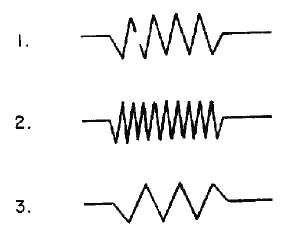4-56
You may check a capacitor suspected of being open by disconnecting it from the circuit and
checking it with a capacitor analyzer. You can check a capacitor suspected of being leaky with an
ohmmeter; if it reads less than 500 kilohms, it is more than likely bad. However, capacitor troubles are
difficult to find since they may appear intermittently or only under operating voltages. Therefore, the best
check for a faulty capacitor is to replace it with one known to be good. If this restores proper operation,
the fault was in the capacitor.
Resistor troubles are the simplest. However, like the others, they must be considered.
1. A resistor can open.
2. A resistor can increase in value.
3. A resistor can decrease in value.
You already know how to check possible resistor troubles. Just use an ohmmeter after making sure
no parallel circuit is connected across the resistor you wish to measure. When you know a parallel circuit
is connected across the resistor or when you are in doubt disconnect one end of the resistor before
measuring it. The ohmmeter check will usually be adequate. However, never forget that occasionally
intermittent troubles may develop in resistors as well as in any other electronic parts.
Although you may observe problems that have not been covered specifically in this chapter, you
should have gained enough knowledge to localize and repair any problem that may occur.
Q41.
What is the most important thing to remember when troubleshooting?
Q42.
What is the main reason for grounding the return side of the transformer to the chassis?
Q43.
What are two types of checks used in troubleshooting power supplies?



